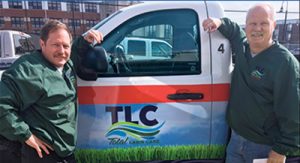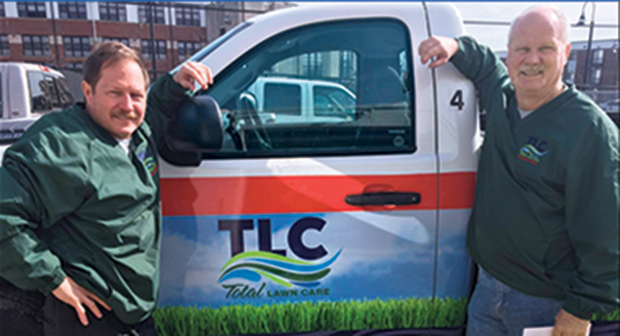How to limit lawn care return visits.

As surely as weeds grow, there will be callbacks. But figuring out exactly how much a callback costs your company—and the best ways to prevent them—isn’t as clear.
“A lot of (lawn care operators) don’t budget for callbacks, so when there is one, that’s a hit to their bottom line,” says Jay Young, herbicide product manager for PBI-Gordon.
Beyond determining the cost, lawn care pros also must figure out ways to reduce callbacks altogether. These tactics include correctly identifying the weed and properly calibrating equipment to reduce problems, Young says. But, there are other variables that are out of their control.
So, how can lawn care operators best budget for, reduce and react to callbacks from their lawn care customers? Two professionals share their techniques and how to break down the cost.
Limiting lost time
While there are several factors that affect the exact cost of a callback, Terry Jungels, co-owner and founder of Total Lawn Care, and his team have estimated the cost is $8 to $10 per 1,000 square feet—since that’s the missed opportunity to provide that time to another client.
The company provides an organic-based lawn fertility and weed-control program, perimeter pest control, grub control, seeding, aeration and lawn renovation. Located in the Indianapolis region, Total Lawn Care generates a seven-figure revenue.
“The cost of a callback is not only the labor and time to manage it but also the lost time in producing revenue,” Jungels adds. “Our time is at a premium in the busy seasons when we need it to produce revenue, so any time spent on callbacks is time not spent on producing revenue.”
The majority of their callbacks typically come in the spring, Jungels says, and the reasons for them include the weather and unmet expectations.
“Our customers are often not home during the day and have concerns if it rains after an application, or they still see some weeds in their lawn after an application,” he says.
The best way to reduce callbacks is to leave good notes with the customer, he says, and that should include explaining what the client can expect to see following an application.
“Letting new customers know that while the weeds may be dead, the tissue will still be present,” Jungels says, “that the majority of herbicides are taken in within one hour, rain is normally not a factor, that mowing and cutting off the product getting translocated to the root is a bigger issue and then even the rosette of the broadleaf weed is often lower than the mowing height.”
Total Lawn Care works to educate clients to reduce inquiries and confusion, helping them to identify which weeds they have on their lawn.
“We post pictures of tall fescue explaining that it’s not crabgrass,” he says. “Every spring, we receive calls saying someone thinks they have crabgrass in March, which is often the coarse, tall fescue. We leave information on summer diseases with pictures describing dollar spot, red thread and rust.”
Educating his team is also an important aspect in curbing callbacks, Jungels adds. “By utilizing our downtime for training, our route managers can answer many questions with a phone call,” he explains.
Using quality products at the correct intervals is another way they limit callbacks.
“In our region, we are in a transition zone for crabgrass controls,” he says. “We use two treatments now to reduce callbacks in the late summer for crabgrass and spurge.”
Half of Total Lawn Care’s calls during the late summer and fall are for spurge and crabgrass, Jungels says. His company uses two crabgrass controls on the lawns plus Dimension for customers who sign up late during the first round, which he says has resulted in a reduction in callbacks.
Knowing callbacks aren’t an “if” but a “when” issue, Jungels sets up his team’s routes so they are never too far away to make a quick call—helping to reduce the time spent and potential revenue lost.
“We attempt to manage our routes in a way that keeps them compact so our guys can be nearby any of their customers for any type of service or callback, which helps reduce the labor time,” he says.
And when Total Lawn Care does get a request, the team strives to return every call within eight hours, with the service being provided within four business days a maximum—preferably within a day.
Although callbacks affect revenue the company does its best to make the most of them to highlight their customer service. “Callbacks and service calls are a big part of our conversation on our application methods and on our service reputation,” Jungels says. “We attempt to reduce the number of callbacks from a labor and material standpoint but, we also prefer that folks do call us with any concerns or questions, as that’s a way to show how our customer service is great and separates us from our competition.”
Cutting down ‘cancels in the waiting’
For Doug Cash, vice president of Arbor-Nomics Turf, a callback is the first indication of a cancelation.
“It’s a cancel in the waiting,” he says. “If you can eliminate them, it’s less cancels you’ll get.”
Arbor-Nomics Turf, with annual revenue above $10 million, offers lawn care, aeration, outdoor pest control and ornamental tree and shrub care. The company has four locations in the Atlanta area and a franchise location in Nashville, Tenn. Ninety-five percent of its properties are residential.
Cash budgets 10 percent for service callbacks—which includes both physical site visits (about 75 percent of his callbacks) and also customer inquiries (phone, email, etc.). “Ninety-nine percent of the time, it’s going to be a nonrevenue trip,” he says.
To reduce callbacks, Cash and his team focus on technician education. They provide classroom training, monthly tests and annual tests to ensure their techs are well educated. One benefit of that training is technicians are able to better answer client questions on their own, instead of needing to call in a manager.
“They go through that training, whether they’ve been there five weeks or five years,” he says.
Choosing the best available products and using them at the correct rates are also important factors in reducing callback rates. Cash went from a six- to a seven-application schedule and found the benefits were two-fold.
“It created another revenue source for the business and reduced callbacks,” he says about increasing the number of applications. The best number of applications will depend on the professionals’ locations, he adds.
Beyond the physical site concerns, callbacks can be just as much an issue of client communication, or the lack thereof. “A lot of times, it’s the technician not communicating well enough,” Cash says.
To prevent that from being the case, Cash says Arbor-Nomics works on being proactive, which includes leaving thorough notes after a treatment and being available for questions.
The company gives all of its techs cell phones so customers can contact them directly and address their concerns more quickly. “No one wants to wait for someone to get back to them,” Cash says. And when Arbor-Nomics does experience a callback, it approaches it like a new sale, pulling out all the stops.
“The quicker you get out there, the better it will be,” says Cash, whose team responds to all service calls within 48 hours. “The response time has got to be immediate. If it’s not, you’re going to be replacing that customer—and it’s much cheaper and better to retain current customers.”


